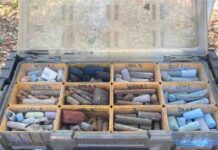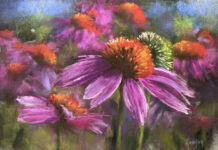Can you believe it’s Friday already?! And that’s cause for celebration because we’ve got another Advisory Board member ready to share their favourite pastel hack. This week we have Emma Colbert.
The question I’m asking is: Do you have a favourite pastel hack—a clever trick or shortcut that you’ve introduced into your process?
So let’s get to Emma’s answer!
“My pastel hack is in how I treat my pastels and the state they are in. While they are a thing of beauty themselves, they are my work tools and how they look reflects that. Sitting fresh and intact in their papers, they are only a promise of the potential they hold until you make them work. That involves breaking them up and experimenting more with the different marks you can create.
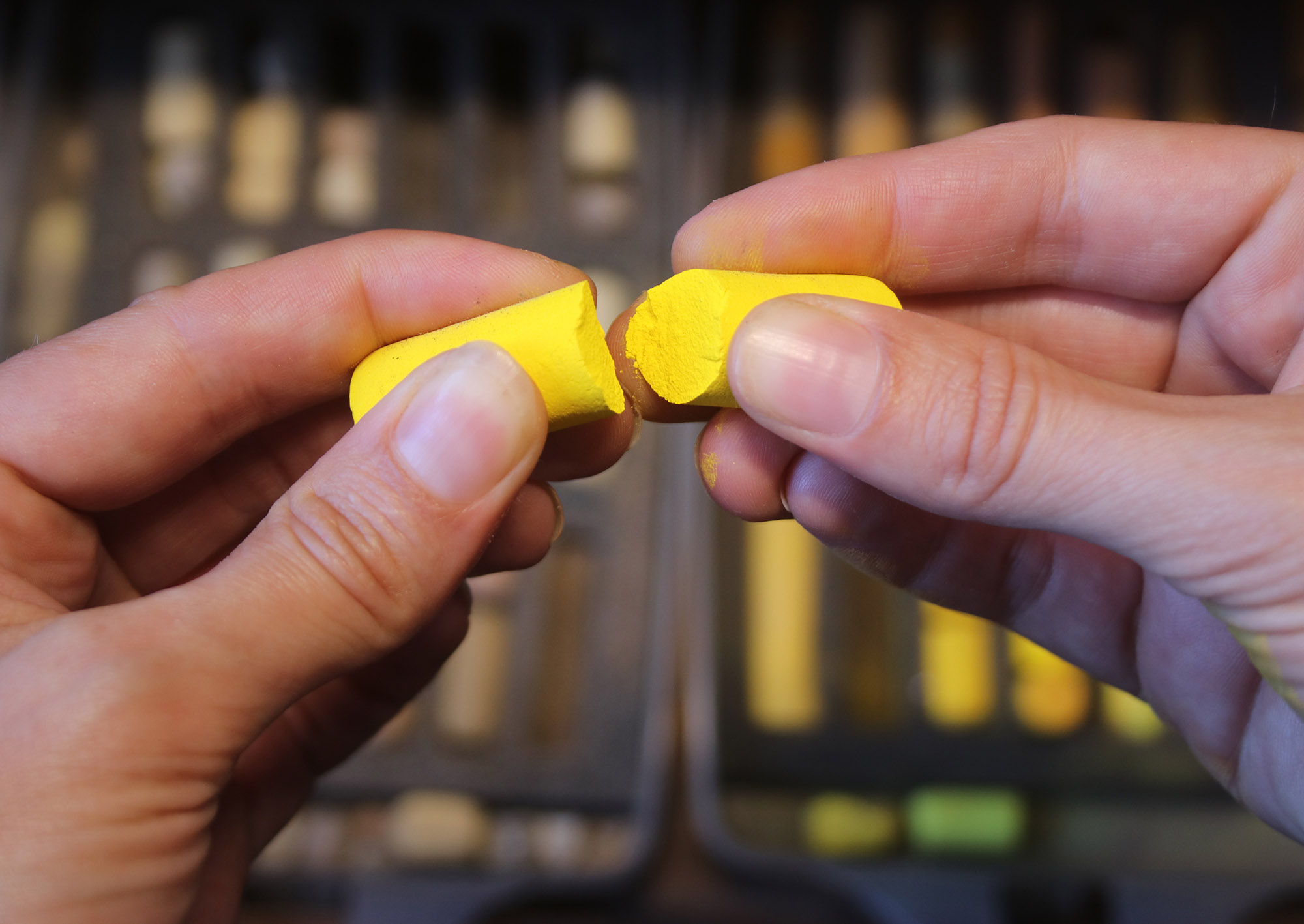
Every little shard of pastel is useful to me and I tend to have several different chunks of pastel in the same colour. That usually results from having one stick wear and break down into different pieces.
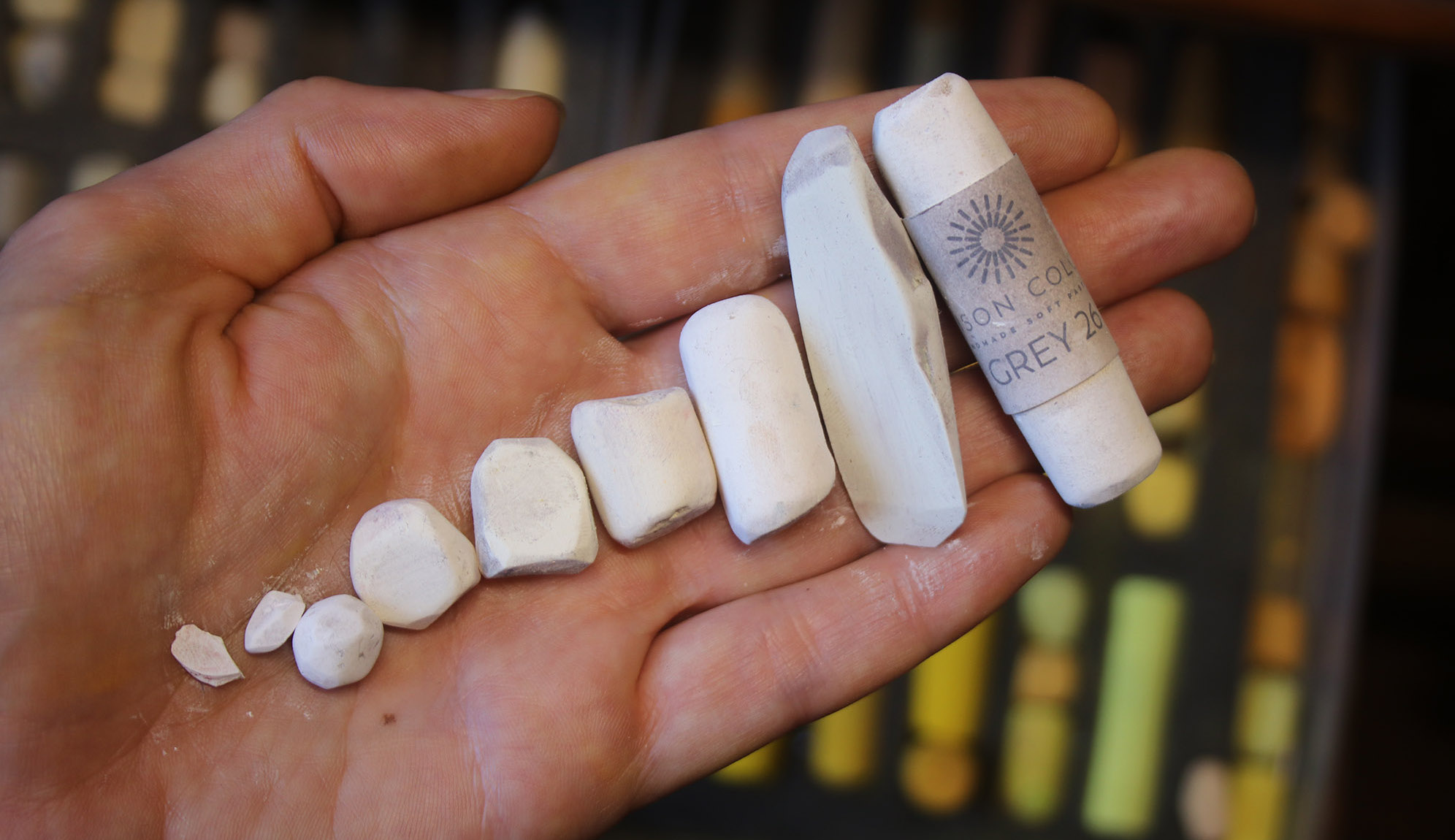
I work in a detailed style and although I do use some pastel pencil, I love to use the pastel sticks as much as possible due to their strong pigment. I find it an incredibly versatile medium allowing me to create soft backgrounds that let the detail in the main subject stand out. To achieve this, I’m using pastel sticks in every shape and form to get a huge range of marks.
I might start with the full pastel on its side to block in a large area. Then I’ll build up layers becoming gradually more detailed with my marks. Often my highlights are applied using very small pieces of pastel. In fact, my light-colour pastels tend to be more broken up because the highlights are usually the smallest marks.
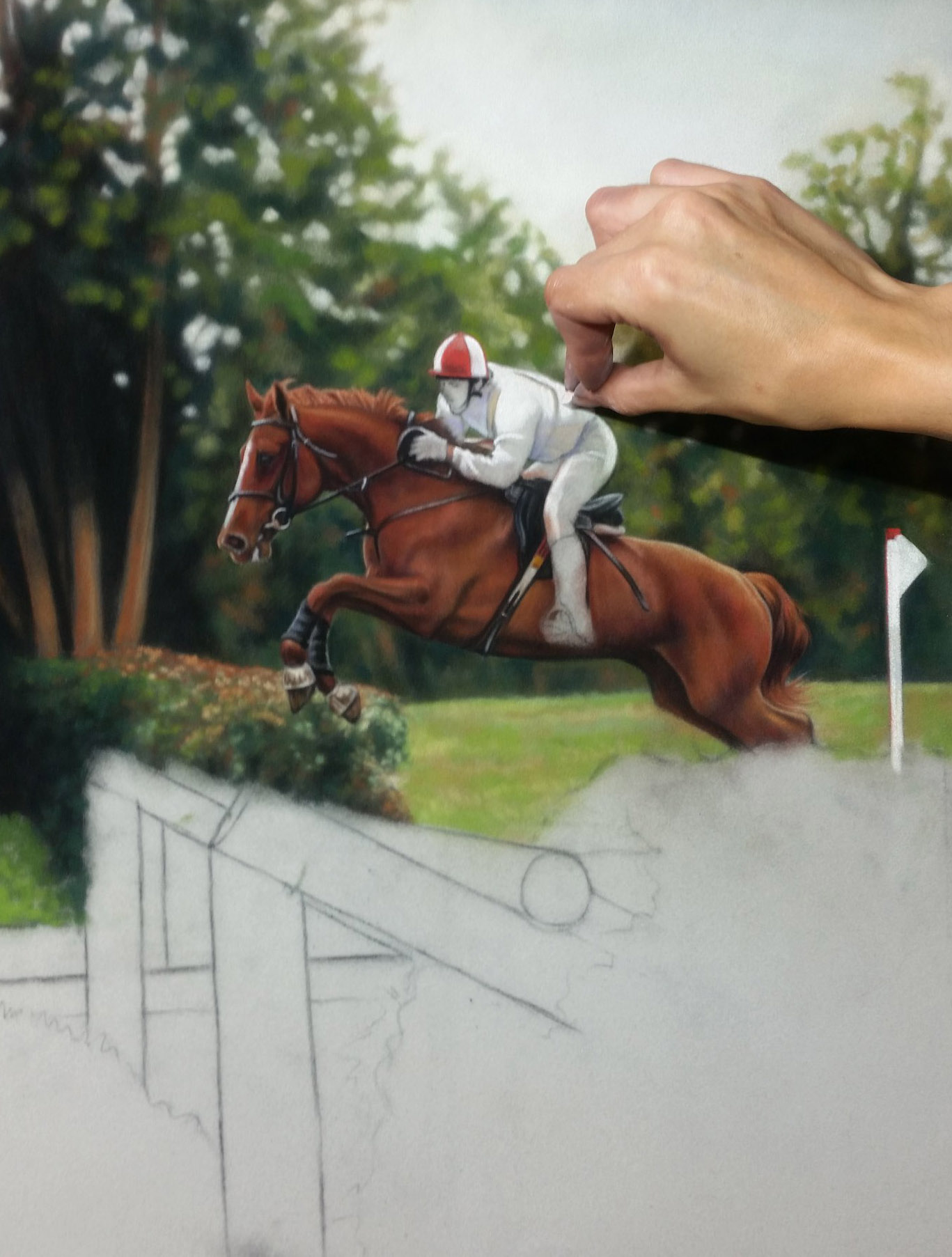
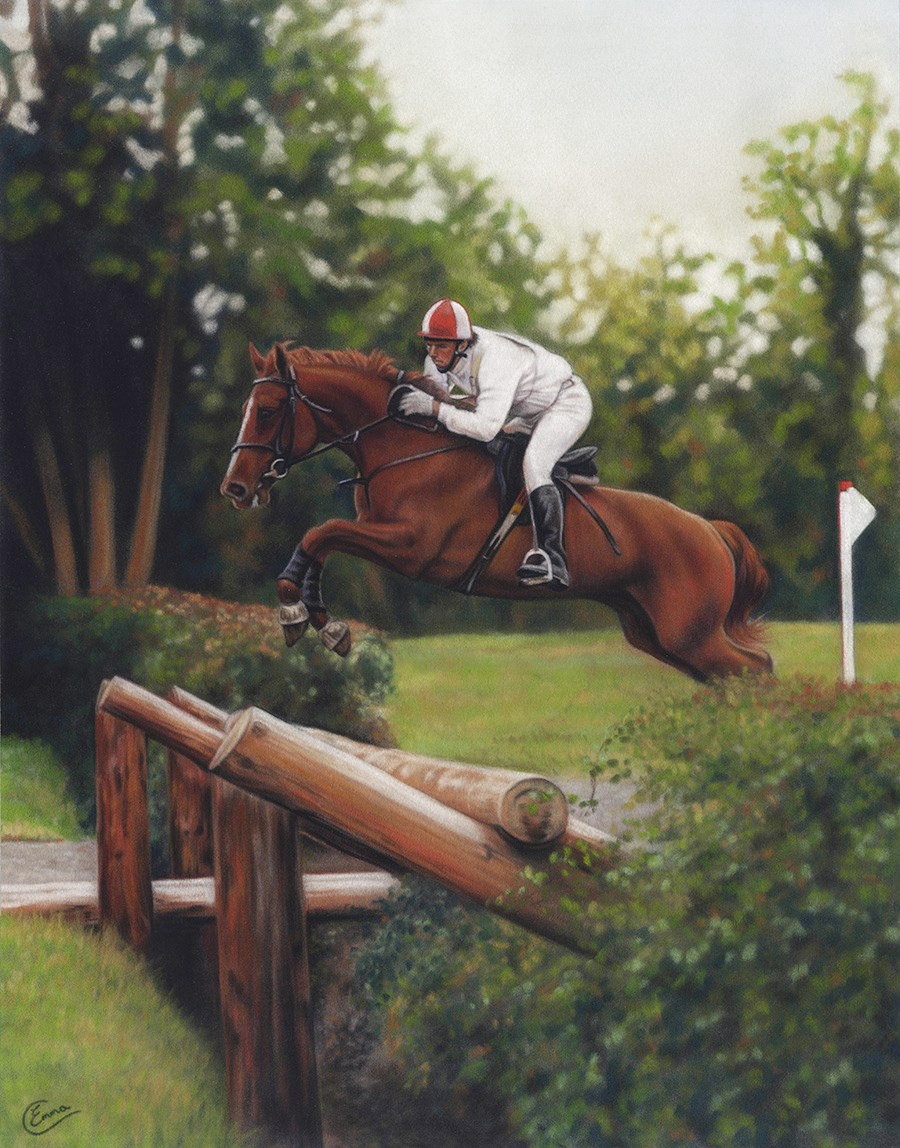
When I paint fur, I’m looking for the larger sections or clumps of fur first rather than at individual hairs. I use the broader marks of the pastels to block in curls and lay down base layers. Unless I’m painting really short flat-coated animals, I rarely need to pick up pastel pencils for the details.
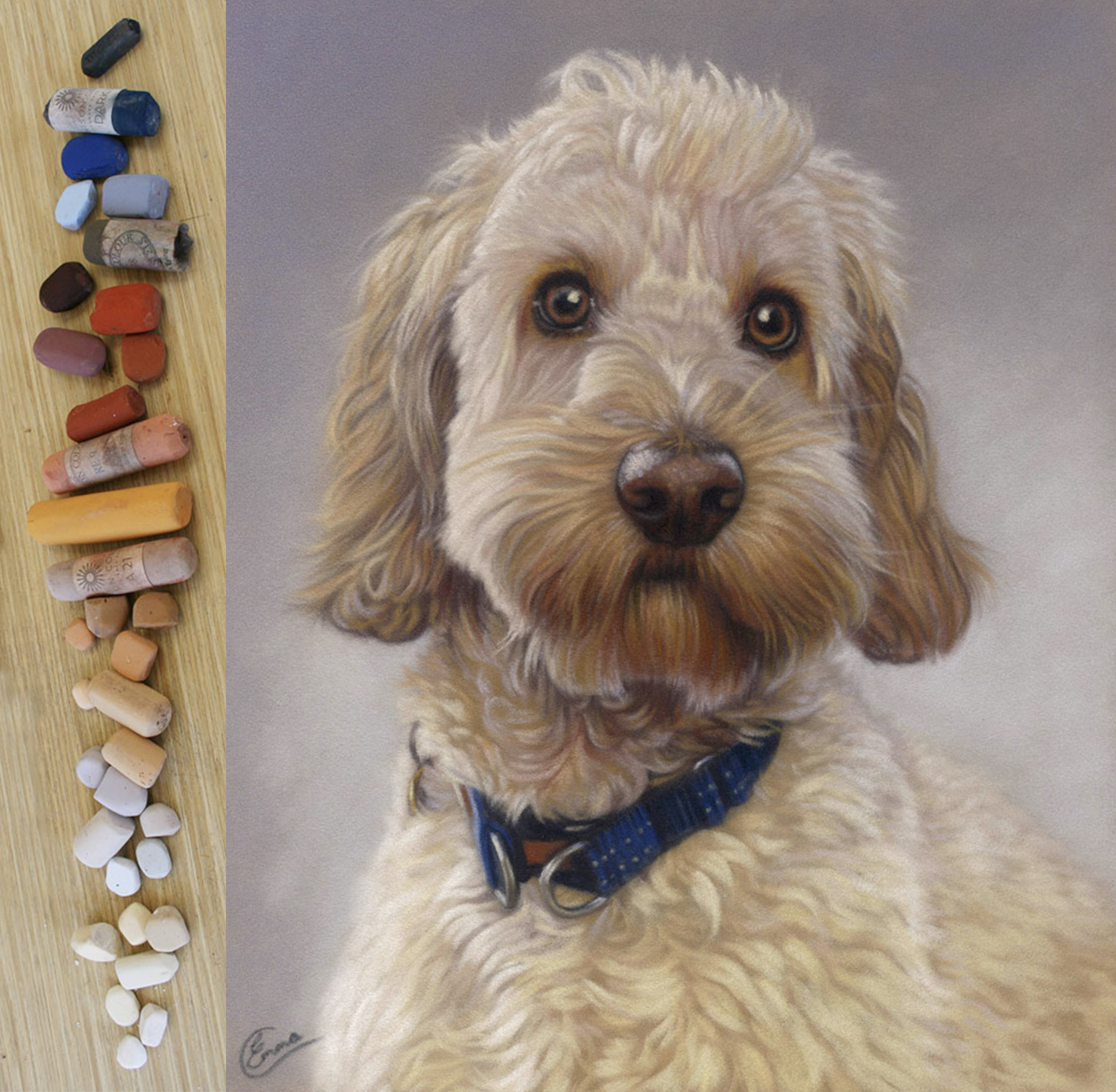
Be brave and rip the papers off, use all sides of the pastels to create your marks, and wear those pastels down. And most importantly, take a deep breath and break them if you need a sharp edge.
I started my art journey using paints, primarily oils. So I see my pastels as if they were brushes pre-loaded with colour. I used to paint with several different brush sizes but I feel I have a much larger range of mark-making possibilities with my pastels.
Those messy boxes of colour provide me with a more interesting range of shapes to work with than any paint brushes ever did. I just have to get them broken, dirty, and working!”
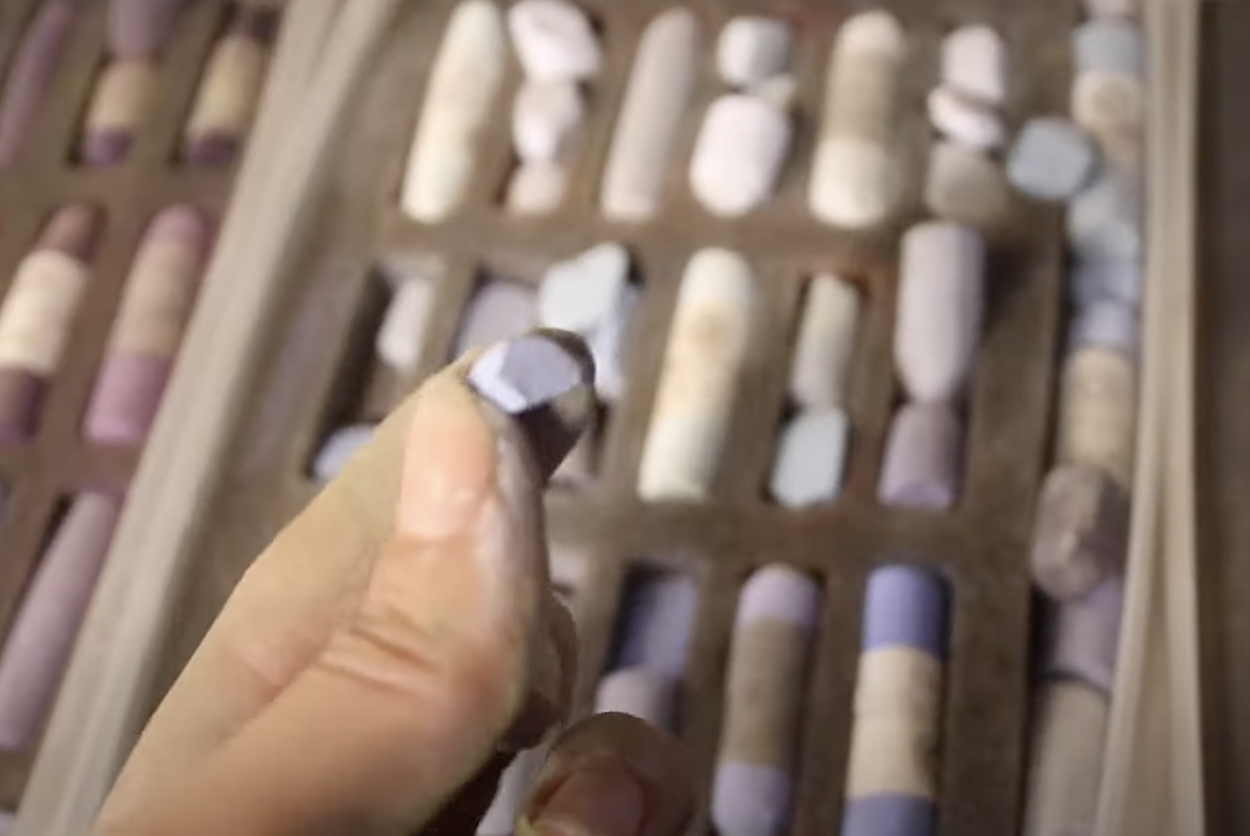
Ahhh Emma, love this! Thanks so much for sharing your favourite pastel hack. I, too, keep all those tiny shards handy.
And yes to the breaking of pastels! That really is the only way to mine the incredible potential in pastels.
________________________________________________________________________
Emma’s favourite pastel hack on video
If you want to learn more about how Emma Colbert creates and uses different sizes of pastel sticks, then have a watch of this video.
And did you know what Emma’s fav pastel stick is? Find out here!
And that’s it for this time!
Gail


